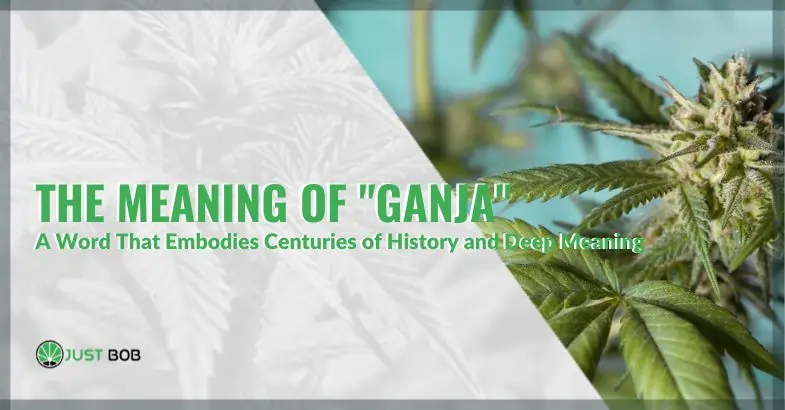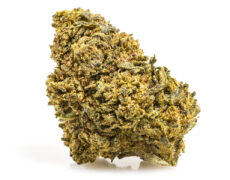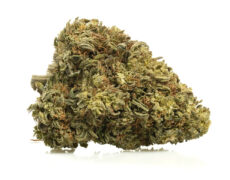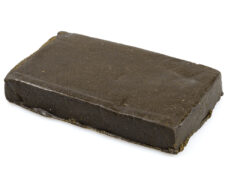Published on: 24/02/2025
From Sanskrit to global culture, the term that defines cannabis tells a story of spirituality, traditions, and cultural exchange across centuries
Ganja, a term often used to refer to cannabis, isn’t just another word for the plant; it’s a word steeped in history, culture, and spiritual significance.
Have you ever wondered where this term comes from? Its journey spans millennia, weaving its way through ancient civilizations, colonial encounters, and musical revolutions.
Let’s embark on a fascinating exploration to uncover the profound layers of meaning embedded within this single, evocative word here on Justbob.
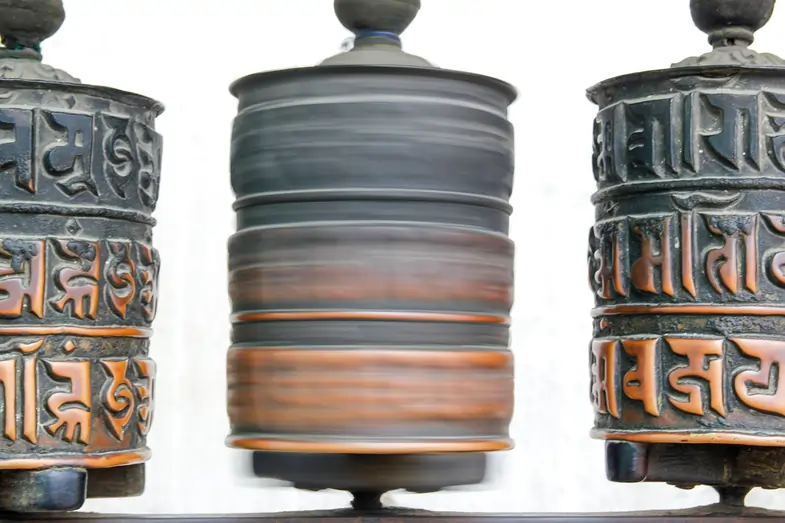

Etymology and Linguistic Roots: The Ancient Origins of “Ganja”
Have you ever paused to consider the linguistic origins of the words you use every day? The term “ganja” is one such example, carrying with it a rich and ancient history.
The story begins in the heart of the Indian subcontinent, specifically with the Sanskrit word “gañjā.” This term, in its original context, wasn’t a generic reference to the plant but rather specifically denoted the potent flowers of the Cannabis sativa plant.
The fact that the specific flowers were named highlights the early understanding of the plant’s unique qualities and their potential.
From Sanskrit, the word transitioned into Hindi as “gāñjā,” maintaining its focus on the plant’s psychoactive properties. This transition demonstrates the evolution of language over time, adapting to both cultural and practical needs.
Now, if you were living in those times, you’d notice the subtle but important way that the language had incorporated ganja into everyday parlance and practice. This linguistic evolution shows just how important cannabis was to the daily lives of those in ancient India, making it far more than a random or inconsequential plant. As languages evolve, so too do the stories that they tell, and this history of the word ganja gives us a glimpse into that fascinating process.
The fact that Sanskrit, one of the world’s oldest languages, is the origin of the word “ganja” is no small matter. It speaks volumes about the historical importance of cannabis in early Indian society. We are talking about a civilization that has been around for thousands of years, and the choice to use a specific word for the flowers, not just the plant, underscores a deep understanding of the plant and its properties.
This detailed naming system also suggests a very practical and discerning approach to the plant, and provides us with context as we try to figure out how the word has evolved over time. Imagine the stories that word could tell if it could talk. It would probably give us insights into rituals, traditions and the very way of life of ancient people.
Read also: Is weed and marijuana the same thing?
Cannabis in Ancient India: A Tapestry of Tradition and Spirituality
Have you ever considered that the plants we know today have very ancient roots? In the case of cannabis, its usage in India goes back thousands of years, with references in some of the most ancient texts of Indian civilization.
For example, the Rigveda, a sacred text composed between 1700 and 1100 BCE, mentions a preparation called “soma” which scholars believe may have contained cannabis. This hints at a level of recognition for this plant that goes beyond simple agricultural use.
Further solidifying the plant’s place in history, the Atharvaveda, another ancient text written between 1500 and 1000 BCE, explicitly mentions “bhanga,” believed to be another term for cannabis. These early texts reveal that cannabis was not just known but was also significant for both its medicinal and spiritual properties. It wasn’t just another plant in the fields; it was a valued tool in both the physical and spiritual health of the people.
In traditional Indian medicine, cannabis was used to treat a wide array of ailments, from digestive problems to managing pain. It was a holistic remedy, showcasing an early understanding of the plant’s therapeutic potential. The plant was not just a source of potential relief; it was a key component in the medical knowledge systems of the time. As with many traditional medicines, there was a respect for the balance that nature could provide.
Beyond its medicinal uses, the psychoactive properties of cannabis made it a valuable component in spiritual practices.
Sadhus, or Hindu ascetics, often used cannabis to aid meditation, seeking to deepen their connection to the divine. Imagine these spiritual seekers using this plant as a tool to enhance their experience, highlighting the plant’s significance in religious practices. Today, this use continues, particularly during religious festivals such as Holi and Shivaratri, where cannabis-based preparations like bhang are consumed as part of traditional rituals, providing a visible link to the ancient practices and traditions.
The Migration of “Ganja” to the Caribbean: A Colonial Connection
Have you ever considered how the movement of people can also lead to the movement of cultures and even plant names? The migration of “ganja” from India to the Caribbean is a powerful example of this.
This journey is intertwined with the history of British colonialism.
Following the abolition of slavery in the British Empire in 1833, there was a labor shortage in the Caribbean plantations. This resulted in the British importing indentured laborers from India to work on plantations in places like Jamaica, Trinidad, and Guyana.
Between 1845 and 1917, thousands of Indian laborers were brought to Jamaica alone, and they brought with them their culture, including the use of cannabis, which they called “ganja.” Can you imagine the culture shock for these laborers and how these traditions found their way to a whole new landscape? It wasn’t just a plant they carried; it was a whole set of traditions, rituals, and a rich history.
Over time, “ganja” became integrated into the local culture, influencing how it was used and its cultural and spiritual significance in the Caribbean. It is a fantastic example of how cultures interact and blend over time. The plant, once solely within the confines of a small community, started to grow outside of these boundaries and into the cultural fabric of the region.


Integration into Jamaican Culture: A Sacred Herb Emerges
In Jamaica, initially, the use of ganja was within the Indian communities; however, it eventually spread to the Afro-Jamaican population. The medicinal and psychoactive properties of the plant resonated with African herbal traditions.
By the early 20th century, ganja had become a common feature of Jamaican life, used both recreationally and medicinally. It wasn’t just a plant people used; it was now a part of daily life, integrating into the fabric of the culture. You can start to picture how embedded it was in the everyday lives of people, demonstrating its deep integration into the Jamaican way of life.
The cultural assimilation of ganja in Jamaica was further reinforced by the rise of the Rastafari movement in the 1930s. This movement embraced ganja as a sacred herb, integral to their religious practices and spiritual beliefs. In their view, ganja was more than just a plant; it was a sacrament, a key to deeper spiritual understanding and a path to connection with Jah (God).
Within Rastafari, smoking ganja is often accompanied by chanting and communal discussions, believing it cleanses the mind, body, and soul, fostering peace and spiritual clarity. It’s like a form of spiritual meditation that was incorporated into their daily lives, showing the important role that the plant plays in their belief system.
The Role of Music in Popularizing Ganja: A Global Anthem
HThe global recognition of “ganja” is closely tied to the influence of reggae music, which emerged from Jamaica in the late 1960s and early 1970s. Artists like Bob Marley, Peter Tosh, and Bunny Wailer played a crucial role in popularizing not just reggae but also the Rastafari movement, including their perspective on ganja. It’s amazing to consider how a local cultural practice could gain international attention through music.
Bob Marley, a true icon in reggae, frequently referenced ganja in his songs. Tracks like “Kaya” and “Easy Skanking” often celebrated the soothing and uplifting effects of the herb, portraying it as a source of inspiration and relaxation. His music didn’t shy away from embracing and portraying the role of the plant in his personal and spiritual life, educating the masses about it in the process. Think about how a song can introduce people to a completely new concept or way of life; that’s exactly what Bob Marley did with his music.
Peter Tosh’s 1976 anthem “Legalize It” directly called for the decriminalization of cannabis, emphasizing its medicinal benefits and cultural importance. His music wasn’t just for entertainment; it was a political act. He used his platform to advocate for a change, showing the power of artists to influence political debate. His work in calling for decriminalization had and continues to have an impact on the ways the plant is viewed all around the world.
Modern Perceptions of Ganja: Navigating Controversy and Acceptance
Today, “ganja” is recognized worldwide as a synonym for cannabis, its usage now transcends cultural and linguistic boundaries. It carries with it a rich history, spiritual importance, and medicinal associations. Yet, despite its widespread acceptance in some circles, ganja remains a subject of legal and social controversy in many parts of the world. This shows just how complicated and nuanced the use of the term and the use of cannabis itself can be.
In countries where cannabis is still illegal, “ganja” is often associated with countercultural movements and underground economies. It’s seen as something rebellious, even illicit. This shows the powerful impact that laws and social norms have on our perception of plants and words. The word can take on an entirely different meaning, depending on the laws and cultural context surrounding it.
However, in regions where cannabis has been decriminalized or legalized, “ganja” is increasingly embraced as a term that evokes cultural heritage and tradition. It’s no longer seen as a taboo, but something that has value and historical depth. A powerful example of how words and their associated meanings can shift as our culture evolves, a sign of how societies can re-evaluate and reimagine their perspectives.
The global cannabis industry has also adopted the term in branding and marketing, appealing to consumers’ sense of connection to the plant’s historical and spiritual roots. This represents a very important shift, where something that was once considered taboo has become marketable. It shows how even commercialization can play a role in changing the perception of a plant, integrating it into the economy, and creating its place in the market.
This has also been made possible by a greater acceptance of cannabis in general, which is particularly evident in the spread of so-called “cannabis light,” that is, CBD-based cannabis.
Cannabidiol has gradually been legalized in numerous countries worldwide. Because of this, today it’s possible to see legally sold CBD-based products, including CBD oil, CBD buds, and even perhaps less well-known but equally appreciated products like legal hashish in many countries including the United Kingdom.
It’s also worth noting that while many countries have legalized the sale of cannabis products, in many cases this is for commercial purposes only, meaning they are freely available for sale but not for human consumption. They might be purchased for purposes such as collecting, and indeed, a large community of collectors has emerged, fueling a growing market.
The Enduring Legacy of Ganja
The term “ganja” is far more than a simple label for cannabis. It embodies a complex interplay of linguistic, cultural, and historical narratives that span millennia.
From its origins in ancient India to its adoption by the Rastafari movement and global dissemination through reggae music, ganja’s journey is one of resilience, adaptation, and enduring cultural significance.
As societies continue to grapple with the legal and social aspects of cannabis use, the lasting legacy of ganja serves as a powerful reminder of the plant’s deep impact on human history and culture. Its story helps us understand our deep and complex relationship with plants and how we connect culture and history to every aspect of our lives. It shows us that one simple word can hold an immense amount of power and depth.
Meaning of ganja: takeaways
- The term “ganja” originates from the Sanskrit word “gañjā,” specifically referring to the potent flowers of the Cannabis sativa plant. This highlights the importance of the plant’s unique properties in ancient Indian culture, where it was deeply intertwined with religious, medicinal, and cultural practices. The word’s journey from its ancient origins to its global usage today underscores the intricate links between language, culture, and the human relationship with cannabis. Its linguistic roots show us how the most specific details about the plant were used to help describe its use and its power.
- The migration of “ganja” from India to the Caribbean is closely linked to British colonialism, where Indian indentured laborers brought the term and the plant to new lands. In Jamaica, ganja became integrated into the local culture, eventually being embraced by the Rastafari movement as a sacred herb. The plant’s significance in both medicinal and spiritual practices demonstrates how it became embedded in the social fabric of the region. This demonstrates how the movement of people can result in the movement of culture and ideas.
- Reggae music, through artists like Bob Marley and Peter Tosh, played a key role in popularizing “ganja” globally. Their music not only entertained but also educated people about the cultural and spiritual dimensions of the plant. Today, “ganja” is a term that transcends linguistic and cultural boundaries, reflecting a complex tapestry of historical, spiritual, and medicinal associations and its impact on a global scale. The artists who adopted it helped to change how we saw the word and how it is used today.
Meaning of ganja: FAQ
What is the origin of the term ‘ganja’?
The term ‘ganja’ originates from the Sanskrit word ‘gañjā,’ which specifically refers to the potent flowers of the Cannabis sativa plant. The word later transitioned into Hindi as ‘gāñjā,’ maintaining its focus on the plant’s psychoactive properties.
How did the term ‘ganja’ spread to Caribbean culture?
The term ‘ganja’ spread to the Caribbean through Indian indentured laborers brought to Jamaica and other islands by British colonizers in the 19th century. These workers introduced cannabis and its cultural practices, which later became integrated into local traditions and were embraced by the Rastafari movement as a sacred herb.
What role did reggae music play in the global popularization of the term ‘ganja’?
Reggae music, through artists like Bob Marley and Peter Tosh, played a key role in popularizing the term ‘ganja’ globally. Their songs celebrated the cultural and spiritual significance of cannabis, helping the term transcend its Jamaican roots and reach a worldwide audience.

